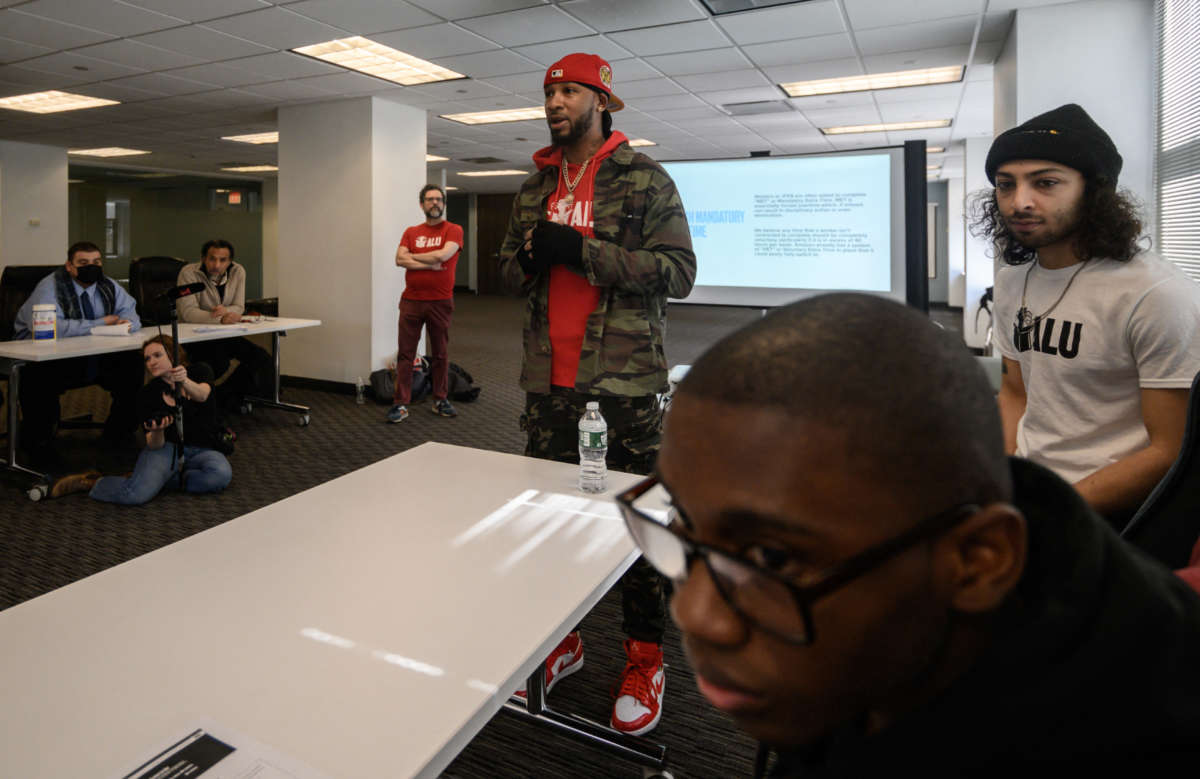In the week after Amazon workers’ historic union victory at a Staten Island, New York warehouse, workers at over 100 Amazon facilities contacted the union about organizing their own workplaces, according to the union’s president.
The union win has spurred a flood of workers to contact Amazon Labor Union (ALU) about unionizing, Christian Smalls told Yahoo Finance on Friday; just about three days before that interview and four days after ALU won their election, Smalls wrote on Twitter that workers at 50 facilities had already reached out about unionizing.
If Smalls’s count is accurate, that means that workers at 10 percent of the company’s roughly 1,000 fulfillment and packing centers are interested in unionizing. Amazon employs around a million workers, primarily in warehouse and delivery jobs, meaning that these union efforts could cover over a hundred thousand workers — a remarkable scope.
Smalls said that he is planning to hold a national call with Amazon employees within the next couple of weeks and will be traveling to facilities to help workers unionize.
The wave came after ALU won the right to represent the over 8,000 workers at the JFK8 warehouse in Staten Island, with a 55 percent vote in favor of unionizing. ALU is currently in the midst of organizing a second warehouse in New York City, LDJ5, where about 1,500 people are employed.
The odds for the newly formed, independent union to win at JFK8 were incredibly slim. ALU’s campaign of bringing food to workers, fundraising for workers in need and connecting with them one-on-one was able to triumph over the multimillion dollar union-busting effort that the company had waged for months.
And still, to Amazon, JFK8’s election isn’t over. In a recently revealed filing, the company charged that the election was unfairly swayed toward the union, and alleged that the union crossed legal boundaries when pro-union workers chimed up during mandatory anti-union meetings and when workers handed out marijuana to those who wanted it. Recreational marijuana is legal in New York state.
“These objections have no merit, and exist merely as a tactic to stall the certification of our union, suppress a democratic outcome, damage morale, and shake workers’ faith in the NLRB process,” ALU said in a statement. “In these many objections, Amazon makes claims that are either misleading, trivial, or downright false. These claims will be investigated and dismissed, but not before weeks or months of NLRB time and resources are wasted.”
It’s unlikely that Amazon will succeed in getting the election invalidated, as the National Labor Relations Board (NLRB) rarely overturns elections with allegations of wrongdoing on behalf of the union, experts say.
With workers proving that they can successfully organize against the $1.5 trillion company and the movement spreading across the country, ALU has the chance to massively expand in the coming months and years. Last week, Smalls and ALU Vice President Derrick Palmer met with Teamsters President Sean O’Brien to discuss how the powerful labor union can aid ALU as it reaches new heights. Smalls says that the union is planning to provide “informal resources.”
If the union movement catches on within Amazon, it could be a huge boon for the U.S. labor movement at large — which, despite recent successes, has been waning both in numbers and strategically, some labor advocates say. Recent union victories, like those at Amazon and Starbucks, have been led largely by young and college-aged workers; labor organizers say that this could breathe new life into the movement and chart new paths for grassroots organizing.
Union membership currently hovers at around 10 percent and has been declining for decades. Over the past six months, however, petitions for union elections have increased by 57 percent, according to NLRB data. The data corroborates labor advocates’ recent observations that the movement has come back in a major way.
We have 10 days to raise $50,000 — we’re counting on your support!
For those who care about justice, liberation and even the very survival of our species, we must remember our power to take action.
We won’t pretend it’s the only thing you can or should do, but one small step is to pitch in to support Truthout — as one of the last remaining truly independent, nonprofit, reader-funded news platforms, your gift will help keep the facts flowing freely.
